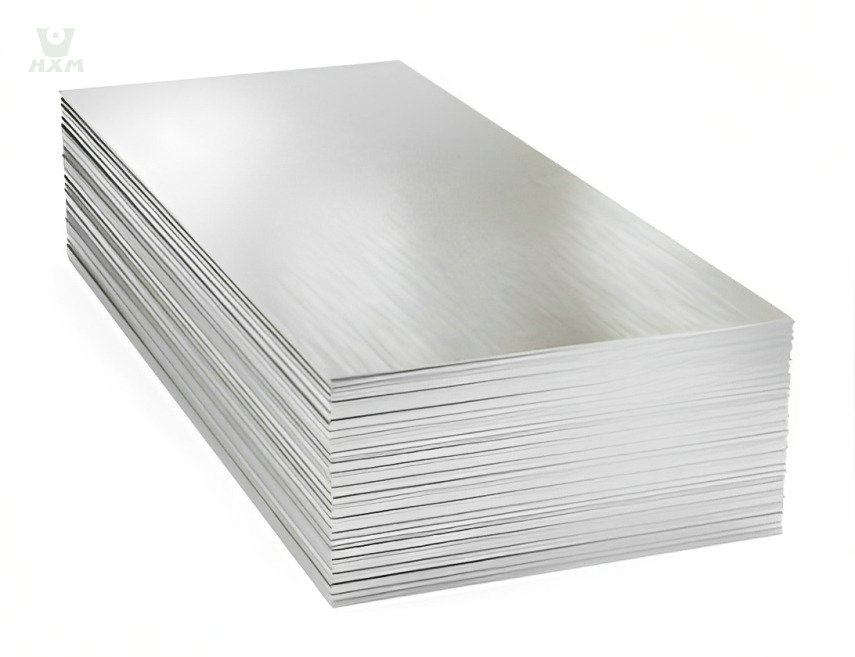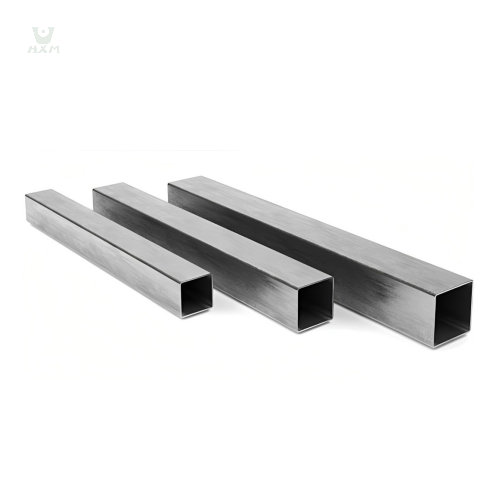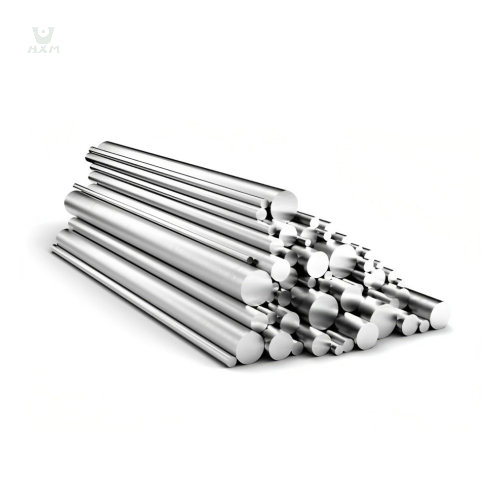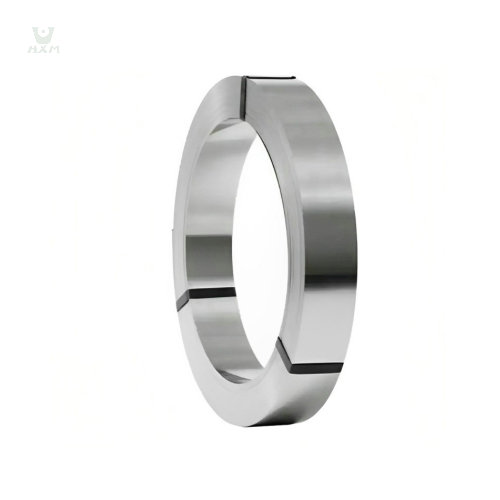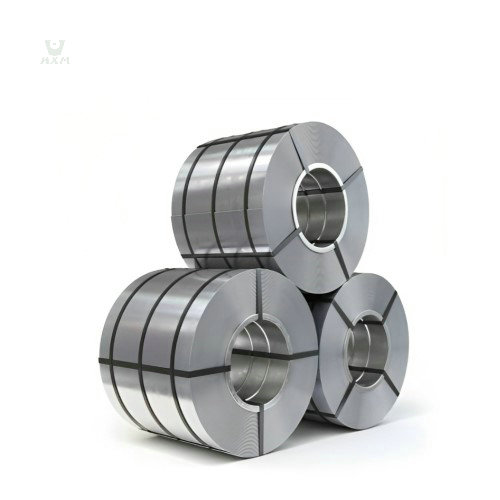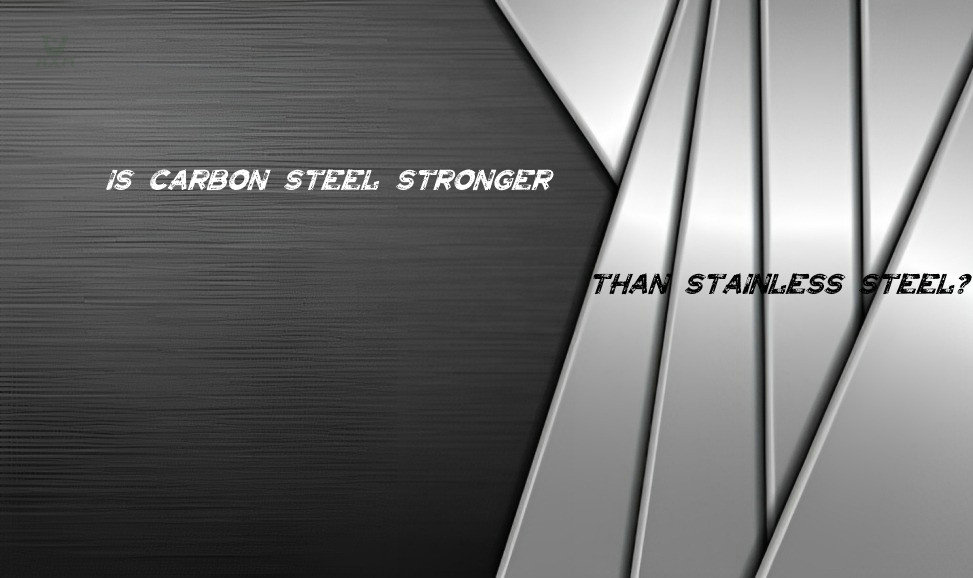Shine Beyond Time
Alloyours Stainless Wonders
Stainless steel products
Introducing Alloyours Stainless Aggregates: Unyielding strength, timeless allure.
We Work With Our Partners
Together, we forge stainless excellence. Join us in shaping a world of enduring quality and innovation. Welcome to the Alloyours family.










our service
We Provide The Best Service
Customer First: Your Success, Our Priority.
Global Reach
Seamless access to our stainless steel solutions worldwide.
Expert Consultation
Dedicated professionals guiding you towards optimal choices.
Timely Delivery
Reliable and efficient shipping, ensuring your projects stay on track.
Enduring Quality
Commitment to providing stainless excellence for lasting impact.
What is stainless steel?
Stainless steel is a corrosion-resistant alloy primarily composed of iron, chromium, and other alloying elements. Its unique properties stem from the intentional combination of these constituents, resulting in a material renowned for its durability, strength, and versatility.
At its core, stainless steel is predominantly composed of iron, a widely abundant and malleable metal. However, what sets stainless steel apart is the inclusion of chromium, usually constituting a minimum of 10.5% of its composition. This crucial addition is responsible for the material’s exceptional resistance to corrosion.
Chromium’s remarkable attribute lies in its ability to form a thin, self-healing oxide layer on the surface of the steel, referred to as passivation. This layer acts as a barrier, preventing direct contact between the metal and external corrosive agents such as moisture and oxygen. Unlike regular steel, this protective layer forms spontaneously and remains stable, even when subjected to environmental factors. As a result, stainless steel is capable of withstanding tarnishing, rusting, and other forms of degradation, making it invaluable for applications requiring longevity and hygiene, such as medical equipment and kitchen utensils.
The corrosion resistance of stainless steel is not solely dependent on chromium. Other alloying elements, such as nickel and molybdenum, can be strategically added to tailor the material’s properties to specific needs. Nickel, for instance, enhances the material’s ductility and impact resistance, crucial for applications in architecture and aerospace. Molybdenum, on the other hand, boosts resistance to acids and chloride-induced corrosion, making stainless steel suitable for use in harsh chemical environments and marine settings.
The crystalline microstructure of stainless steel also contributes to its properties. The addition of alloying elements and the controlled cooling process during fabrication lead to the formation of specific crystal phases. These phases determine the material’s mechanical properties, including its strength and hardness. Furthermore, this microstructure enables stainless steel to maintain its structural integrity even at elevated temperatures, making it suitable for applications in high-temperature environments like exhaust systems in automotive engineering and industrial furnaces.
In essence, stainless steel exemplifies the principle of alloying, wherein the careful combination of different elements results in a material that transcends the properties of its individual constituents. The synergy between iron, chromium, and other alloying elements gives rise to a material with remarkable corrosion resistance, mechanical strength, and thermal stability. This makes stainless steel indispensable in industries spanning from construction to healthcare, where reliability, longevity, and performance are paramount.
In summary, stainless steel is a corrosion-resistant alloy that showcases the scientific art of alloying. The incorporation of chromium and other alloying elements transforms iron into a material that resists corrosion, maintains structural integrity at high temperatures, and exhibits a broad spectrum of mechanical properties. Through meticulous design and composition, stainless steel embodies the ingenuity of combining elements to create a material that shapes the modern world.
Why is stainless steel an alloy?
Stainless steel, an incredibly versatile material ubiquitous in modern life, is scientifically classified as an alloy due to its distinct composition and resulting properties. To grasp this categorization, one must delve into the fundamental characteristics of alloys and the intricate interplay of elements within stainless steel.
An alloy is a substance composed of two or more elements, typically metals, combined in a way that enhances their individual properties and yields new, synergistic attributes. Stainless steel adheres to this definition as it’s primarily constituted of iron and chromium, with the latter comprising at least 10.5% of its composition. This precise combination transforms the inherent nature of these elements and yields a material with remarkable corrosion resistance and durability.
At the heart of stainless steel’s alloy designation is chromium. When exposed to oxygen in the atmosphere, chromium forms a passive oxide layer on the surface of the steel. This layer is extremely thin but highly effective, acting as a barrier that shields the underlying metal from corrosion and environmental influences. This phenomenon, called passivation, grants stainless steel its unrivaled rust resistance, an attribute not inherent in pure iron.
Moreover, the introduction of other alloying elements, such as nickel and molybdenum, further refines the material’s properties. Nickel enhances the material’s toughness and resistance to temperature variations, making it suitable for applications ranging from kitchen utensils to industrial equipment. Molybdenum, on the other hand, bolsters the steel’s resistance to acids and chloride-containing environments, making it a staple in marine and chemical industries.
The scientific essence of alloys lies in the deliberate combination of elements to create a material that surpasses the individual capabilities of its constituents. Stainless steel’s unique characteristics, including its resistance to corrosion, durability, and aesthetic appeal, stem from this intricate mingling of iron and chromium. These elements interact on a molecular level to form a crystalline structure that resists the detrimental effects of oxidation and external agents.
Stainless steel’s alloy status is not only rooted in its elemental composition but also in its tailoring for specific applications. Engineers and metallurgists can fine-tune the ratios of alloying elements to achieve desired properties, producing variants of stainless steel that are optimized for distinct purposes. This ability to customize the material’s attributes sets it apart from simple mixtures or impurities found in other materials.
In conclusion, stainless steel’s classification as an alloy is deeply grounded in its precise composition and the transformation of its constituent elements into a material with exceptional properties. The integration of iron and chromium, alongside other alloying elements, results in a robust, corrosion-resistant, and versatile substance that shapes industries and technologies worldwide. Through this meticulous alloying process, stainless steel exemplifies the scientific principle of harnessing the power of elements to create materials that transcend their individual capabilities, ultimately contributing to the advancement of modern society.
Chemical composition of some common stainless steel grades
304 | C % | Si % | Mn % | P % | S % | Ni % | Cr % | Mo % | N % | Cu % |
ASTM | 0.08 | 0.75 | 2.00 | 0.045 | 0.030 | 8.0 – 10.5 | 18.0 – 20.0 | – | 0.10 | – |
DIN/EN | 0,07 | 1,00 | 2,00 | 0,045 | 0,015 | 8,0 – 10,5 | 17,5 – 19,5 | – | 0,10 | – |
JIS | 0.08 | 1.00 | 2.00 | 0.045 | 0.030 | 8.0 – 10.5 | 18.0 – 20.0 | – | – | – |
GB | 0.08 | 1.00 | 2.00 | 0.045 | 0.030 | 8.0 – 10.0 | 18.0 – 20. 0 | – | – | – |
304L | C % | Si % | Mn % | P % | S % | Ni % | Cr % | Mo % | N % | Cu % |
ASTM | 0.03 | 0.75 | 2.00 | 0.045 | 0.030 | 8.0-12.0 | 18.0-20.0 | – | 0.10 | |
DIN/EN | 0,03 | 1,00 | 2,00 | 0,045 | 0,015 | 10,0-12,0 | 18,0-20,0 | – | 0,10 | – |
JIS | 0.03 | 1.00 | 2.00 | 0.045 | 0.030 | 9.0-13.0 | 18.0-20.0 | – | – | – |
GB | 0.03 | 0.75 | 2.00 | 0.045 | 0.030 | 8.00-12.0 | 18.0-20.0 | – | 0.10 | – |
430 | C % | Si % | Mn % | P % | S % | Ni % | Cr % | Mo % | N % | Cu % |
ASTM | 0.12 | 1.00 | 1.00 | 0.04 | 0.030 | 0.75 | 16.0-18.0 | – | – | |
DIN/EN | 0,08 | 1.00 | 1.00 | 0.04 | 0.015 | – | 16.0-18.0 | – | – | – |
JIS | 0.12 | 0.75 | 1.00 | 0.04 | 0.030 | – | 16.0-18.0 | – | – | – |
GB | 0.12 | 1.00 | 1.00 | 0.04 | 0.030 | 0.75 | 16.0-18.0 | – | – | – |
301 | C % | Si % | Mn % | P % | S % | Ni % | Cr % | Mo % | N % |
ASTM | 0.15 | 1.00 | 2.00 | 0.045 | 0.030 | 6.0-8.0 | 16.0-18.0 | – | 0.1 |
DIN/EN | 0.07 | 1.00 | 2.00 | 0.045 | 0.030 | 6.0-8.0 | 16.0-18.0 | – | 0,1 |
JIS | 0.15 | 1.00 | 2.00 | 0.045 | 0.030 | 6.0-8.0 | 16.0-18.0 | – | – |
GB | 0.15 | 1.00 | 2.00 | 0.045 | 0.030 | 6.0-8.0 | 16.0-18.0 | – | 0.1 |
| 202 | C % | Si% | Mn % | P % | S % | Ni % | Cr % | N % | Mo % |
| ASTM | 0.15 | 1 | 7.5-10.0 | 0.06 | 0.03 | 4.0-6.0 | 17.0-19.0 | 0.25 | – |
| DIN/EN | 0.15 | 1.00 | 7.5-10,5 | 0.045 | 0.015 | 4.0-6.0 | 17.0-19.0 | 0.05-0.25 | – |
| JIS | 0.15 | 1 | 7.5-10.0 | 0.06 | 0.03 | 4.0-6.0 | 17.0-19.0 | 0.25 | – |
| GB | 0.15 | 1 | 7.5-10.0 | 0.05 | 0.03 | 4.0-6.0 | 17.0-19.0 | 0.05-0.25 | – |
| 2205 | C% | Mn% | Si% | Cr% | Ni% | Mo% | N% | S% | P% |
| ASTM | ≤ 0.03 | ≤ 2.0 | ≤ 1.0 | 22-23 | 4.5-6.5 | 3.0-3.5 | 0.14-0.20 | ≤ 0.02 | ≤ 0.03 |
| EN | ≤ 0.03 | ≤ 2.0 | ≤ 1.0 | 22-23 | 4.5-6.5 | 3.0-3.5 | 0.14-0.20 | ≤ 0.02 | ≤ 0.03 |
| JIS | ≤ 0.03 | ≤ 2.0 | ≤ 1.0 | 21-23 | 4.5-6.5 | 2.5-3.5 | 0.08-0.20 | ≤ 0.03 | ≤ 0.04 |
| GB | ≤ 0.03 | ≤ 2.0 | ≤ 1.0 | 22-23 | 4.5-6.5 | 3.0-3.5 | 0.14-0.20 | ≤ 0.02 | ≤ 0.03 |
| 2507 | C% | Si% | Mn% | P% | S% | Ni% | Cr% | Mo% | N |
| ASTM | ≤ 0.03 | ≤ 0.8 | ≤ 1.2 | ≤ 0.035 | ≤ 0.02 | 6.0-8.0 | 24.0-26.0 | 3.0-5.0 | 0.24-0.32 |
| EN | ≤ 0.03 | ≤ 1.00 | ≤ 2.00 | ≤ 0.035 | ≤ 0.015 | 6.0-8.0 | 24.0-26.0 | 3.0-5.0 | 0.20-0.30 |
| JIS | ≤ 0.03 | ≤ 1.00 | ≤ 1.2 | ≤ 0.035 | ≤ 0.02 | 6.0-8.0 | 11.5-14.5 | 3.0-5.0 | 0.24-0.32 |
| GB | ≤ 0.03 | ≤ 0.08 | ≤ 1.2 | ≤ 0.035 | ≤ 0.02 | 6.0-8.0 | 24.0-26.0 | 3.0-5.0 | 0.20-0.32 |
characteristics of some common stainless steel grades
Stainless steel’s remarkable resistance to corrosion arises from its inherent composition and the formation of a protective passive layer. This unique attribute stems from the high content of chromium, typically comprising at least 10.5% of the alloy.
When exposed to oxygen, chromium interacts with the atmosphere to generate a thin and continuous chromium oxide layer on the surface of the steel. This oxide layer is self-healing, forming spontaneously upon exposure to air or water. It acts as a barrier that effectively isolates the underlying metal from the surrounding environment, preventing direct contact with corrosive agents.
The chromium oxide layer is stable, adherent, and impervious to most chemicals, making it highly effective at warding off corrosion. Importantly, even if the surface is scratched or abraded, the self-healing nature of the oxide layer enables it to reform, preserving its protective function.
Furthermore, the synergy between chromium and other alloying elements, such as nickel and molybdenum, enhances stainless steel’s resistance to localized corrosion, pitting, and crevice corrosion in challenging environments, including those containing chlorides, acids, and alkaline solutions.
This robust corrosion resistance makes stainless steel suitable for diverse applications across various industries, including construction, transportation, food processing, chemical processing, and more. Its durability in aggressive environments contributes to its long lifespan and reduced maintenance needs.
In essence, stainless steel’s resistance to corrosion is a result of its carefully balanced alloy composition, which facilitates the formation of a passive oxide layer. This phenomenon provides a formidable defense against the deleterious effects of corrosion, ensuring that stainless steel remains an enduring choice for countless industrial and domestic applications.
Stainless steel exhibits exceptional mechanical properties owing to its unique alloy composition and microstructural characteristics. These attributes render it a versatile and sought-after material in various industries.
- Strength and Toughness: Stainless steel boasts high tensile and yield strengths, rendering it capable of withstanding substantial mechanical loads. Additionally, its toughness – the ability to absorb energy without fracturing – ensures its resilience even in demanding applications.
- Ductility and Formability: Stainless steel’s malleability and ductility enable it to undergo various forming processes, including rolling, bending, and deep drawing, without compromising its structural integrity. This attribute makes it adaptable for intricate designs and complex shapes.
- Hardness and Wear Resistance: Different grades of stainless steel can be heat-treated to attain varying levels of hardness, providing options suitable for environments where abrasion and wear resistance are crucial, such as industrial machinery components and cutting tools.
- Fatigue Resistance: Stainless steel’s fatigue resistance is critical in applications subject to cyclic loading or stress, as it can withstand repeated mechanical forces without suffering from fatigue failure, ensuring extended component lifecycles.
- Temperature Stability: Certain stainless steel alloys exhibit remarkable strength and stability at elevated temperatures, making them ideal for applications in high-temperature environments such as engines, turbines, and exhaust systems.
- Magnetic and Non-Magnetic Properties: Depending on the alloy composition and heat treatment, stainless steel can exhibit either magnetic or non-magnetic properties, making it suitable for applications where magnetic characteristics may be advantageous or undesirable.
- Impact Resistance: Stainless steel’s impact resistance contributes to its reliability in structures and equipment where sudden forces or dynamic loads are common, providing safety and reliability.
The mechanical properties of stainless steel are influenced by factors including its alloying elements, heat treatment, and microstructure. By manipulating these factors, engineers can tailor stainless steel to meet specific requirements, resulting in a vast array of grades optimized for diverse applications. This adaptability, combined with its robust mechanical performance, underscores stainless steel’s role as a preferred material in industries ranging from automotive manufacturing to architecture and beyond.
Stainless steel’s high-temperature resistance is a testament to its exceptional alloy composition and microstructural stability. This quality allows it to maintain its mechanical strength and structural integrity when exposed to elevated temperatures, making it invaluable in a wide range of demanding applications.
- Oxidation Resistance: Stainless steel’s ability to withstand high temperatures is largely attributed to the formation of a protective oxide layer on its surface. This layer, primarily composed of chromium oxide, acts as a barrier against oxidation and prevents the underlying metal from reacting with oxygen. As a result, stainless steel retains its surface finish and mechanical properties even in environments with elevated temperatures.
- Retained Strength: Many stainless steel grades maintain their mechanical strength at high temperatures, ensuring that structural components can continue to bear loads without compromising safety or performance. This attribute is particularly crucial in industries such as aerospace, where materials must withstand extreme thermal conditions.
- Creep Resistance: Creep is the gradual deformation that materials experience when subjected to constant stress at elevated temperatures. Stainless steel’s alloying elements, such as chromium and nickel, enhance its resistance to creep, allowing it to retain its shape and dimensions over extended periods at high temperatures.
- Scaling Resistance: Scaling refers to the formation of oxide layers on the surface of a material when exposed to high temperatures. Stainless steel’s oxide layer prevents excessive scaling, maintaining its appearance and preventing deterioration even after prolonged exposure to heat.
- Thermal Expansion: Stainless steel’s relatively low thermal expansion coefficient minimizes dimensional changes that can occur as a result of temperature fluctuations. This characteristic is crucial in applications where precise tolerances are essential.
- Applications: Stainless steel’s high-temperature resistance finds application in industries such as aerospace, power generation, petrochemicals, and automotive manufacturing. It is used in gas turbines, exhaust systems, furnace components, and heat exchangers, among other critical components subjected to elevated temperatures.
In summary, stainless steel’s ability to withstand high temperatures is a result of its protective oxide layer, alloying elements, and microstructural stability. This quality ensures that it remains a reliable choice for applications that demand both mechanical strength and resistance to thermal degradation, contributing to enhanced performance and longevity in challenging environments.
Stainless steel’s hygienic properties stem from its unique characteristics and surface properties, making it a preferred material for applications that require cleanliness, sanitation, and prevention of contamination.
- Smooth Surface: Stainless steel’s non-porous and smooth surface resists the adherence of dirt, grime, and microorganisms. This property is essential in industries like food processing and healthcare, where surfaces must be easy to clean and disinfect.
- Corrosion Resistance: Stainless steel’s resistance to corrosion ensures that it can withstand exposure to water, cleaning agents, and disinfectants without deteriorating. This resistance is vital in maintaining a sterile environment and preventing the growth of harmful microorganisms.
- Non-Reactivity: Stainless steel is inert and non-reactive with most substances, ensuring that it won’t leach harmful chemicals or react with food, beverages, or medical solutions. This quality makes it suitable for applications where maintaining purity is paramount.
- Ease of Cleaning: Stainless steel can be easily cleaned using a variety of methods, including steam, high-pressure water, and chemical disinfectants. Its smooth surface allows for thorough cleaning and prevents the accumulation of residues that can harbor bacteria.
- Durability: Stainless steel’s durability ensures that it can withstand rigorous cleaning protocols, frequent handling, and exposure to harsh cleaning agents without deteriorating. This durability contributes to its long service life in hygiene-critical environments.
- Regulatory Compliance: Stainless steel is widely accepted and used in industries where strict hygiene standards and regulations are enforced, such as food processing, pharmaceuticals, and medical devices.
- Aesthetic Appeal: Stainless steel’s polished and visually appealing surface is not only easy to clean but also gives a sense of cleanliness and professionalism, making it suitable for environments where aesthetics matter.
- Applications: Stainless steel’s hygienic properties make it ideal for food processing equipment, medical instruments, surgical tools, and sanitary piping systems. It is also used in the construction of clean rooms, laboratories, and environments where contamination must be minimized.
In summary, stainless steel’s hygienic attributes are rooted in its non-reactive, corrosion-resistant, and easily cleanable nature. These properties, combined with its durability and regulatory compliance, make it an essential material in industries that prioritize sanitation and contamination prevention.
The weldability of stainless steel is an important characteristic of the material, which demonstrates adaptability and maneuverability in a wide range of welding processes. The following are some of the important characteristics of stainless steel in terms of weldability:
1. Versatility of Welding Methods: Stainless steel can be processed through a variety of welding methods, including arc welding, inert gas shielded welding, plasma welding, and so on. This makes stainless steel suitable for a variety of engineering needs, from small parts to large structures. 2.
2. Oxidation resistance: Stainless steel’s resistance to oxidation helps reduce the risk of oxidation by reducing the amount of oxygen that comes into contact with the metal during the welding process. This means that stainless steel is less prone to serious oxidation problems during the welding process.
3. Specialized welding consumables: For different types of stainless steel, there are specific welding electrodes and wires that help to achieve a high quality weld and reduce oxidation and impurities.
4. Controlled Heat Input: Controlling heat input is critical when welding stainless steel. Excessive heat input can lead to intergranular corrosion and deterioration, so welding parameters need to be carefully controlled to maintain the integrity of the alloy.
5. preheating and post heat treatment: for some stainless steels, especially those types susceptible to intergranular corrosion during welding, preheating and post heat treatment can help to eliminate stress and improve the corrosion resistance of the weld. 6. protective atmosphere: in the welding of stainless steels, the weld will be made in a protective atmosphere.
6. Protective atmosphere: the use of inert gas protection in the welding process can effectively reduce the impact of oxygen and other impurities on the weld, helping to obtain a high-quality weld.
In general, the weldability of stainless steel depends on the type of alloy, welding method, welding consumables and operating techniques. Under the right welding conditions, stainless steel can yield high-quality welded connections for a variety of industrial applications, including construction, manufacturing, aerospace and more.
Stainless steel is an environmentally friendly material that demonstrates its sustainability and contribution in a number of ways, making it a choice that meets today’s sustainability needs.
1. Recyclability: Stainless steel is a recyclable material as it can be 100% recovered and reprocessed without any degradation in quality or performance. This helps to reduce resource consumption and waste generation.
2. Long life and durability: Stainless steel’s corrosion resistance and mechanical properties allow for long life and durability, which reduces the frequency of replacement and maintenance, and reduces the need for resources.
3. Low Maintenance Requirements: Stainless steel’s corrosion resistance and durability means that it generally does not require frequent maintenance and servicing, reducing the need for cleaning agents and maintenance tools.
4. Harmlessness: Stainless steel does not release hazardous substances and therefore does not have a negative impact on the environment and human health. This makes stainless steel suitable for use in food processing, drinking water systems, and other areas related to health and hygiene.
5. Energy efficient: The high temperature stability of stainless steel makes it suitable for use in high temperature environments, thus contributing to energy efficiency and energy savings, for example in heat exchangers and power generation equipment.
6. Low radiation: Stainless steel does not emit radiation and is therefore also used in the nuclear industry, medical equipment and other areas.
7. Designability: Stainless steel’s malleability and workability allow it to be used to create environmentally friendly projects such as energy efficient designs and renewable energy facilities.
In short, the environmental friendliness of stainless steel is reflected in its recyclability, durability, low maintenance requirements, non-hazardousness, and fit with energy efficiency and sustainability goals. This makes stainless steel ideal for reducing environmental impact and promoting sustainable development in many areas.
What is the role of eatch chemical composition of stainless steel?
Each chemical component in stainless steel plays a crucial role in determining its properties and characteristics. Here’s a scientific explanation of the role of each major chemical component:
Carbon is present in stainless steel in controlled amounts. It affects the material’s strength and hardness by forming carbides with chromium. However, excessive carbon can lead to reduced corrosion resistance and increased brittleness.
Chromium is a key component that imparts stainless steel’s corrosion resistance. It reacts with oxygen to form a thin, invisible oxide layer on the surface, called the passive layer, which protects the underlying metal from corrosion.
Nickel enhances stainless steel’s corrosion resistance and gives it its austenitic structure. It also improves toughness and ductility, making the steel more suitable for cryogenic and high-temperature applications.
Manganese helps stabilize austenitic stainless steels and aids in deoxidation during steelmaking. It also enhances work hardening and mechanical properties, contributing to strength.
Silicon is used as a deoxidizer during steelmaking and improves high-temperature strength. It also helps control the growth of the oxide layer and contributes to corrosion resistance.
Phosphorus is usually present in low amounts and can have a negative effect on toughness and corrosion resistance. It is controlled to avoid detrimental effects on material properties.
Sulfur, like phosphorus, is typically kept at low levels because excess sulfur can lead to brittleness and reduced corrosion resistance.
Nitrogen, although present in small amounts, contributes to the strength and stability of austenitic stainless steels. It also aids in improving the material’s pitting and crevice corrosion resistance.
These elements are often added in specific grades of stainless steel to enhance certain properties. For example, molybdenum improves resistance to pitting and crevice corrosion, while titanium and niobium stabilize the structure during welding.
In essence, the synergy between these chemical components is what gives stainless steel its remarkable combination of corrosion resistance, mechanical strength, and other desirable properties. The precise balance of these elements allows for the creation of various stainless steel grades optimized for different applications.
How is stainless steel categorized?
Stainless steel is classified into several different categories and grades based on its composition, structure and performance characteristics. The following are some common ways of categorizing stainless steel:
Classification by organization
-
Austenitic Stainless Steel:
Good corrosion resistance and plasticity, usually containing a high proportion of nickel and chromium, e.g., 304, 316, etc. -
Ferritic Stainless Steel:
rich in chromium, good corrosion resistance, but relatively poor plasticity, such as 430. -
Martensitic Stainless Steel:
rich in carbon, with high hardness and strength, usually used for cutting tools and mechanical parts.
Classified according to use
-
Corrosion-resistant stainless steel:
optimized for corrosion resistance, used in chemical industry, marine engineering, food processing, etc. -
High-temperature resistant stainless steel:
excellent high-temperature stability, suitable for high-temperature equipment and heat exchangers. -
Wear-resistant stainless steel:
high hardness and wear resistance, used for cutting tools, machine parts, etc.
Classified according to alloy composition
-
Chromium stainless steel:
contains a high proportion of chromium, mainly used for applications requiring high corrosion resistance. -
Nickel stainless steel:
contains a high proportion of nickel, has good corrosion resistance and high temperature resistance. -
Nickel-molybdenum stainless steel:
Containing nickel and molybdenum, it is used to improve corrosion resistance, especially for chloride media.
Classified according to the field
-
Architectural stainless steel:
used in construction, decoration and other fields, usually requires aesthetic and weather resistance. -
Food grade stainless steel:
used in food processing equipment, the requirements of the material is harmless, easy to clean. -
Medical stainless steel:
used in medical equipment, requiring harmless materials, corrosion resistance, easy to disinfect.
Building The Future
Latest From the Blog
Contact Us
Reach out to us today !

